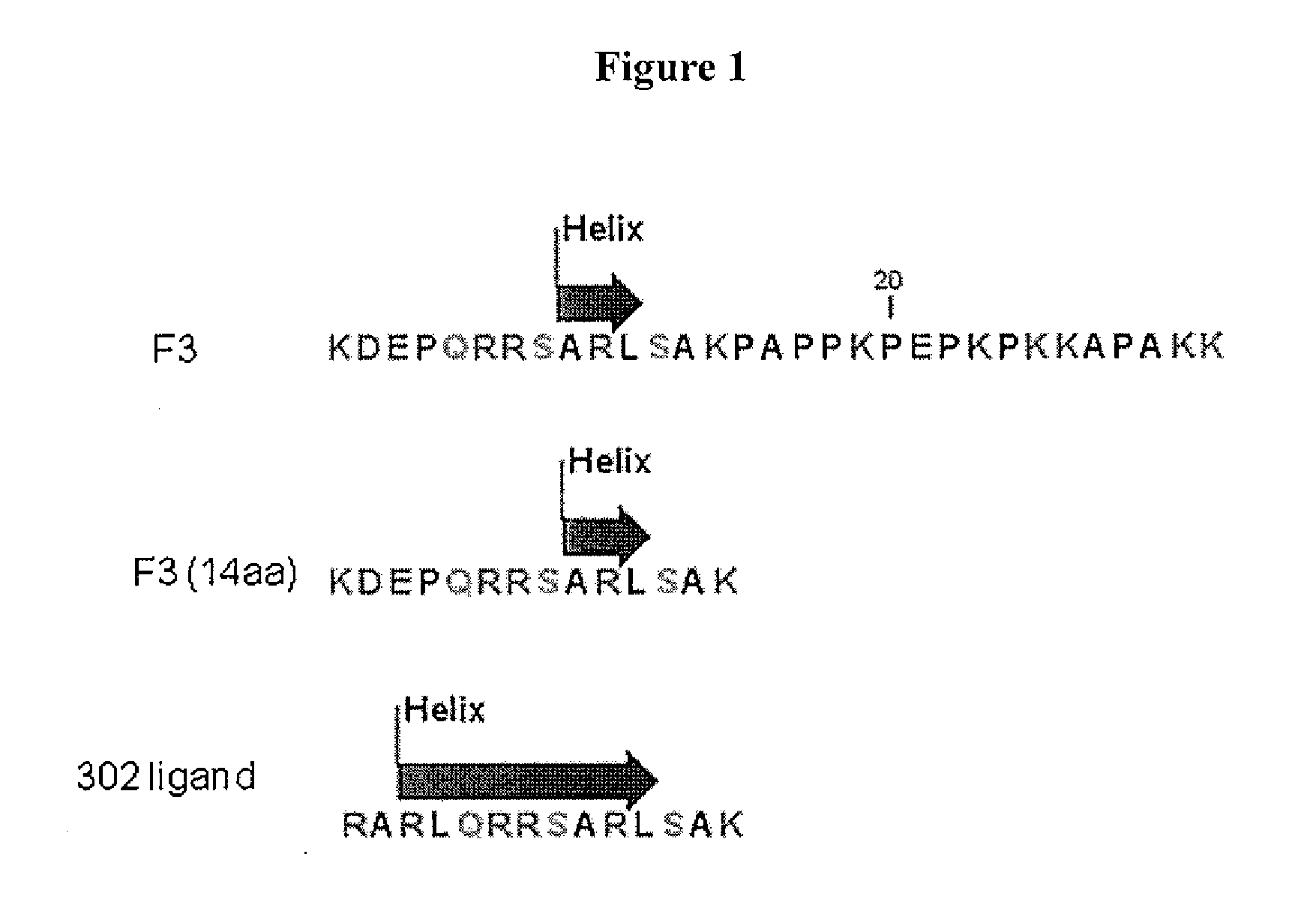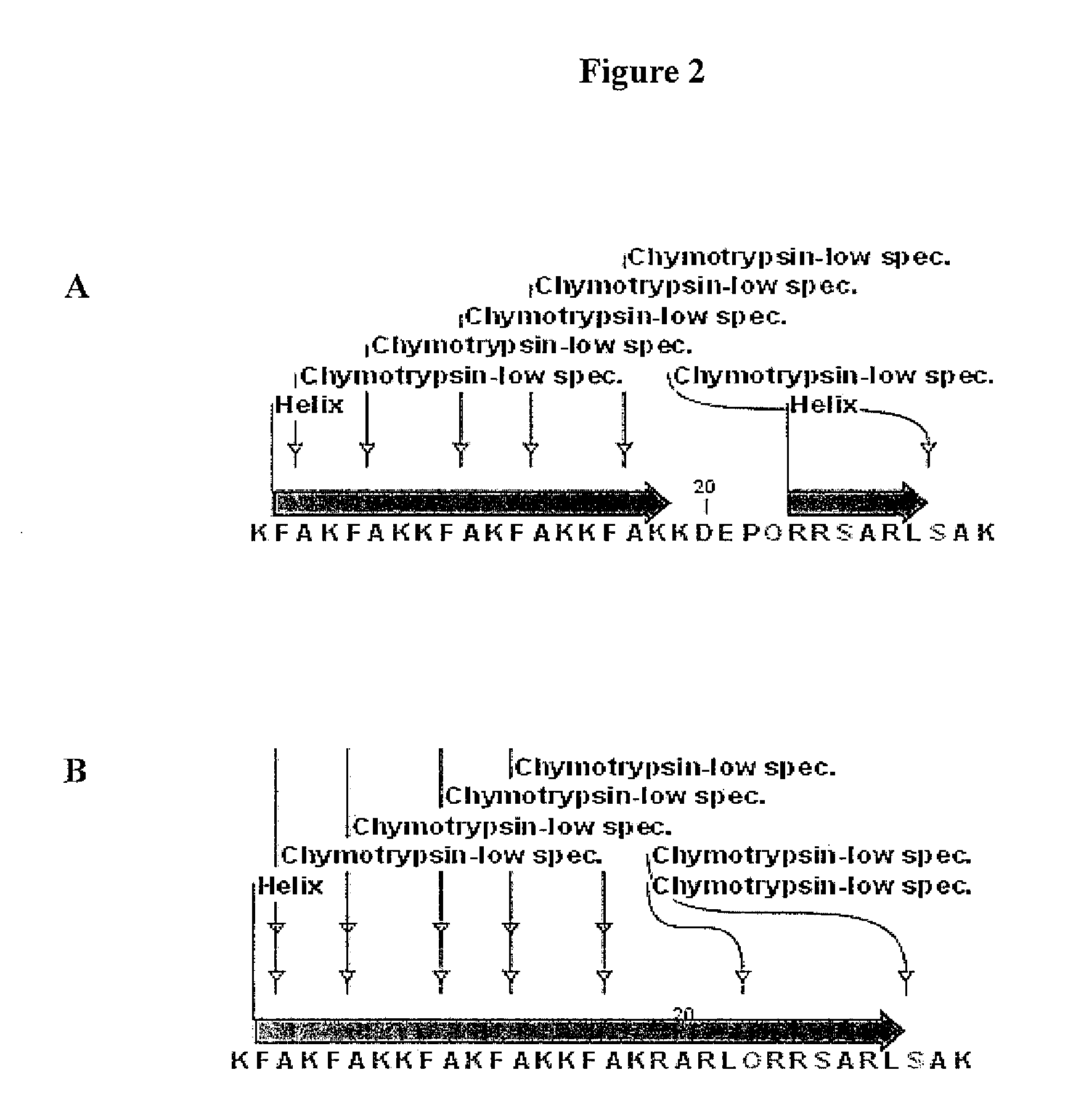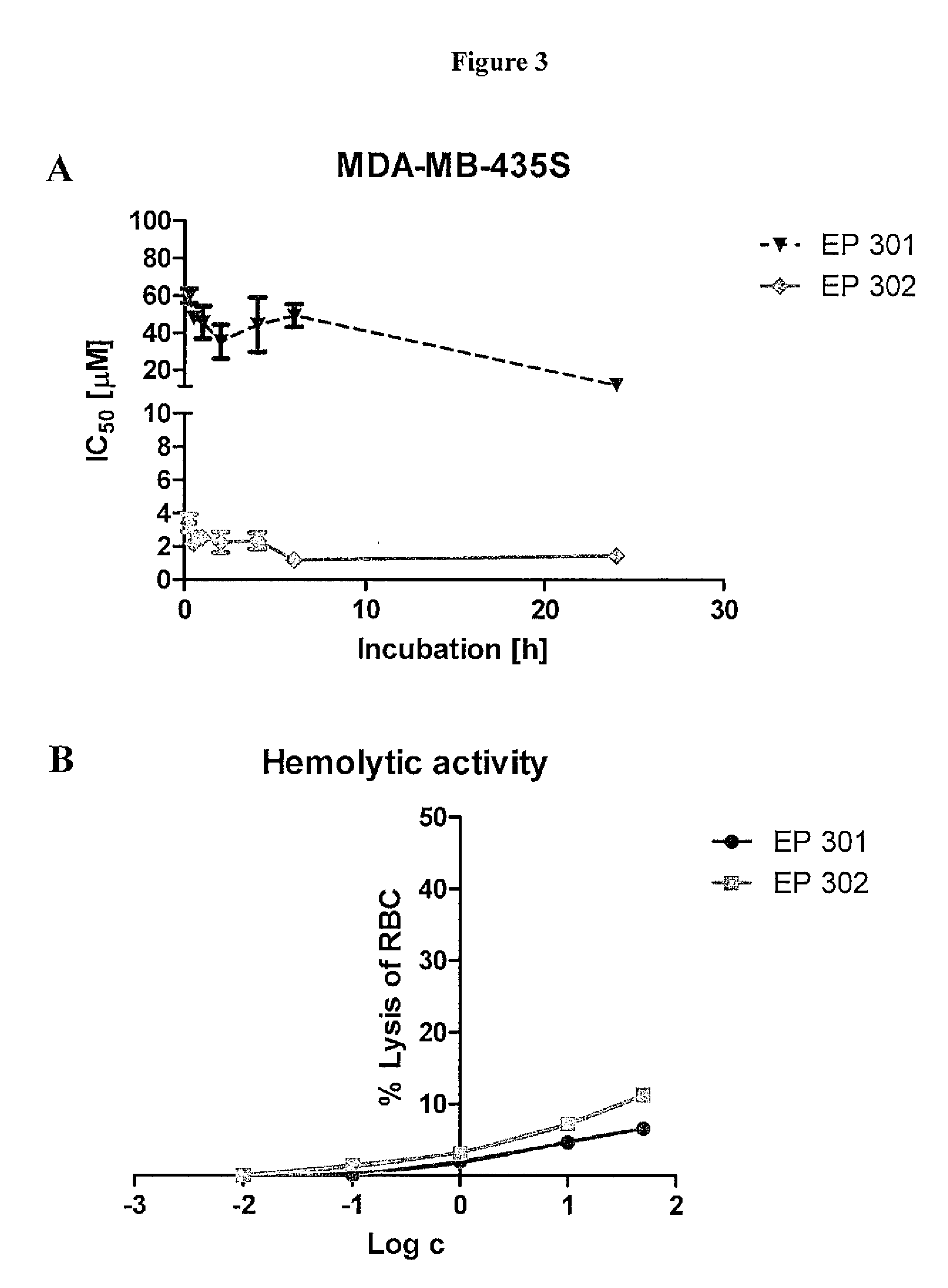Nucleolin-binding peptides, nucleolin- binding lytic peptides, fusion constructs and methods of making and using same
a technology of nucleolin and lytic peptides, which is applied in the direction of peptide/protein ingredients, drug compositions, angiogenin, etc., can solve the problems of undesirable side effects of patients and substantial damage to normal cells and tissues, and achieve the effects of increasing cell necrosis, inhibiting or preventing progression, and reducing cell volume or siz
- Summary
- Abstract
- Description
- Claims
- Application Information
AI Technical Summary
Benefits of technology
Problems solved by technology
Method used
Image
Examples
example 1
[0210]This example includes a description of designed peptides.
[0211]A computer simulation was used to design a 14-amino acid helical peptide from a nucleolin binding sequence of HMGN2-derived molecule (F3 peptide). F3 is a 31 amino acid protein with the sequence KDEPQRRSARLSAKPAPPKPEPKPKKAPAKK, which has been reported to bind to nucleolin (Porkka K et al., Proc. Natl. Acad. Sci. USA. 99:7444 (2002)). The first 14 amino acids of F3, KDEPQRRSARLSAK, show a short helical structure from residues 9 to 11. A substituted peptide sequence was made by replacing the KDEP sequence with RARL to RARLQRRSARLSAK and to increase helicity. Various length of the nucleolin binding analogues were synthesized with the primary sequence of: R1ARLQRRSARL11, R1ARLQRRSARLS12, H1ARLQRRSARLSAK14, R1VRLQRRSARLSAK14, and H1AHLQRRSARLSAK14.
[0212]A fusion construct was subsequently designed by conjugating the first 14 amino acids of F3 via a peptide bond at the C terminus of an 18 amino acid lytic peptide, KFAKFA...
example 2
[0214]This example includes studies of the anticancer activity of nucleolin binding peptides.
[0215]Nucleolin binding peptides were analyzed for anti-cancer activity in vitro against MDA-MB-435S breast cancer cells. KDEPQRRSARLSAKPAPPKPEPKPKKAPAKK (F3 peptide), KDEPQRRSARLSAK (F3-14 mer fragment), RARLQRRSARLSAK, R1ARLQRRSARL11, R1ARLQRRSARLS12, H1ARLQRRSARLSAK14, R1VRLQRRSARLSAK14, and H1AHLQRRSARLSAK14were freshly dissolved in saline and added into cancer cell seeded multi-well plates at increasing concentrations of 0, 0.001, 0.01, 0.1, 1, 2, 5, 10 and 100 μM. Incubations were conducted for 120 h at 37° C. Cell viability was determined using formazan conversion assays (MTT assays). Controls were treated with USP saline or 0.1% TritonX-100™ as reference for 0 and 100% cell death, respectively. Cytotoxicity was evaluated as an IC50 values.
[0216]Results (Table 1) showed that the newly designed ligand had superior anti-cancer activity compared to F3 and the 14 mer F3 peptide. The highe...
example 3
[0217]This example includes a description of designed fusion constructs.
[0218]A fusion construct was subsequently designed by conjugating the first 14 amino acids of F3 via a peptide bond at the C terminus of an18 amino acid lytic peptide, KFAKFAKKFAKFAKKFAK, to form a 32 amino acid fusion construct K1FAKFAKKFAKFAKKFAKKD20EPQRRSARLSAK32(subscripts refer to the position of amino acid in the sequence). This fusion construct is hereafter referred to as EP-301.
[0219]Analysis of the fusion construct showed absence of helicity from amino acids 19-22 (KDEP) of the molecule. Substitution of KDEP with RARL sequence resulted in a continuous alpha helical fusion construct from amino acids 1 to 29 of the fusion construct. The full sequence of this fusion construct is K1FAKFAKKFAKFAKKFAKR19ARLQRRSARLSAK32, which is hereafter called EP-302. Computer representations of EP-301 and EP-302 are shown in FIG. 2.
PUM
| Property | Measurement | Unit |
|---|---|---|
| Fraction | aaaaa | aaaaa |
| Fraction | aaaaa | aaaaa |
| Molar density | aaaaa | aaaaa |
Abstract
Description
Claims
Application Information
 Login to View More
Login to View More - R&D
- Intellectual Property
- Life Sciences
- Materials
- Tech Scout
- Unparalleled Data Quality
- Higher Quality Content
- 60% Fewer Hallucinations
Browse by: Latest US Patents, China's latest patents, Technical Efficacy Thesaurus, Application Domain, Technology Topic, Popular Technical Reports.
© 2025 PatSnap. All rights reserved.Legal|Privacy policy|Modern Slavery Act Transparency Statement|Sitemap|About US| Contact US: help@patsnap.com



